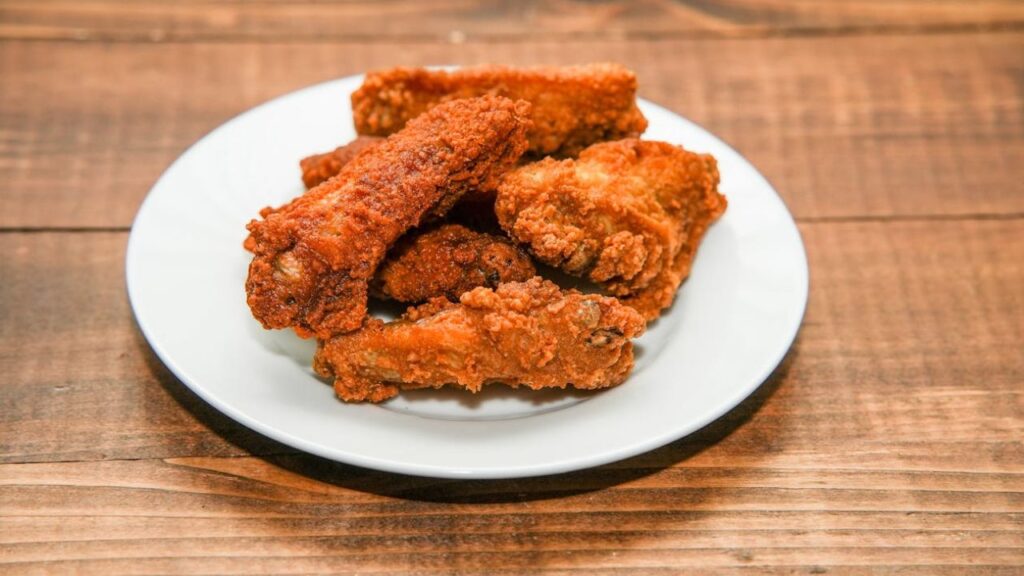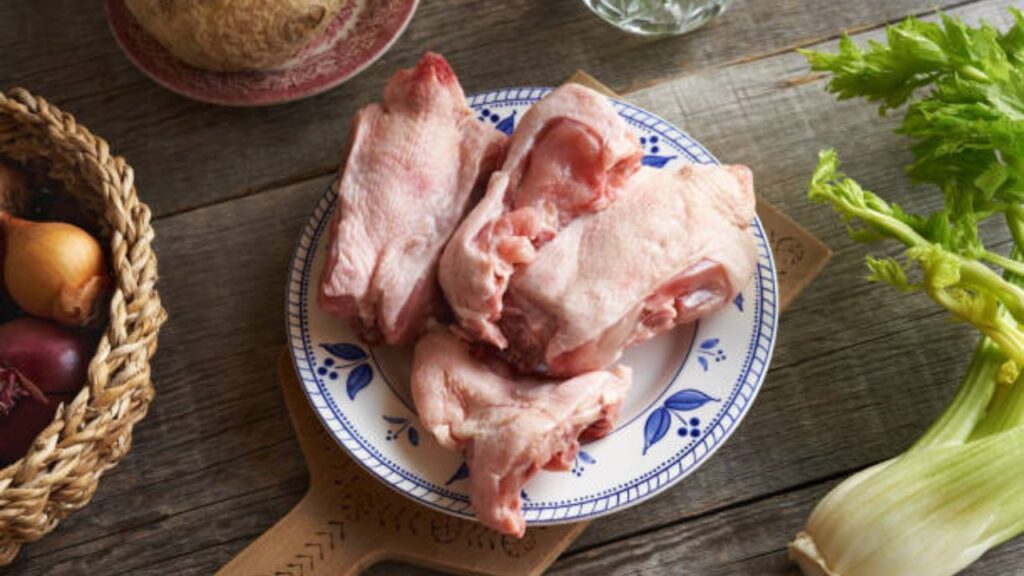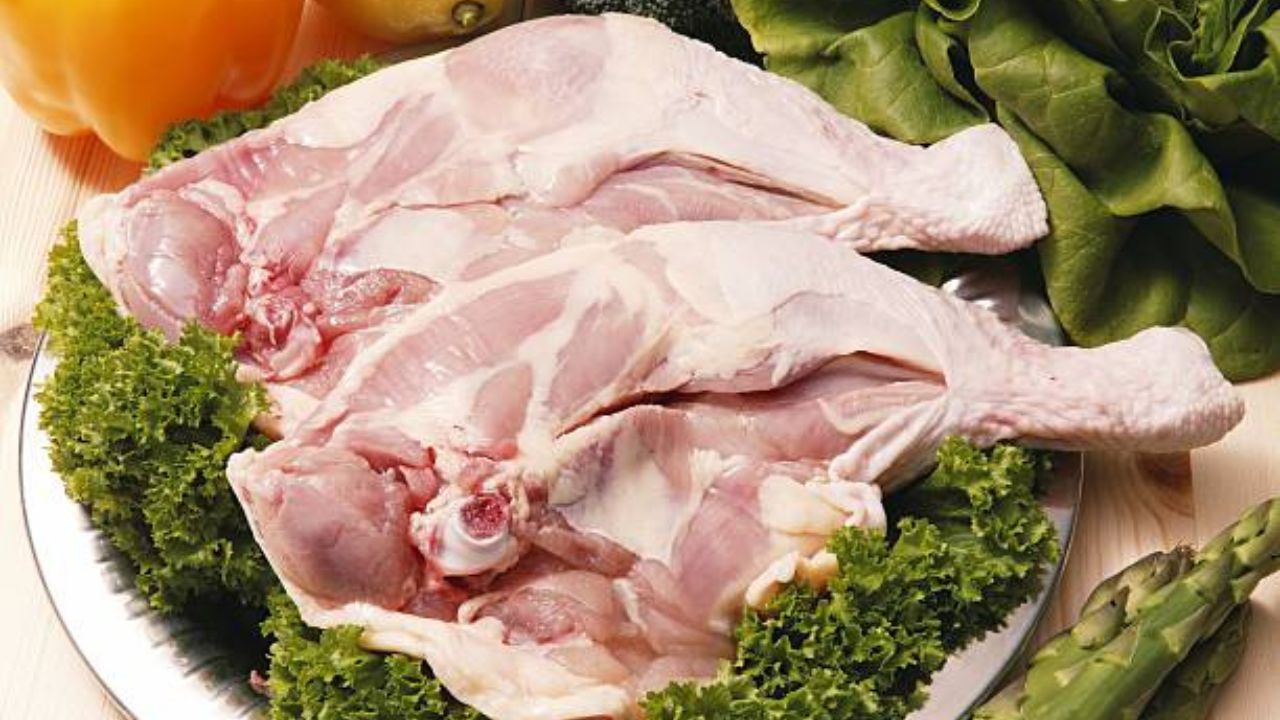When you need affordable yet delicious meals at home, chicken backs are a secret weapon for many cooks. While these lesser-known parts of the animal are often ignored, they have a lot to offer: flavor, nutrition and many uses. Is your goal to try new recipes at home, spend less on food or eat more sustainably by not wasting parts of your ingredients? Then chicken backs should be considered in your menu planning. Here, we will explain why you should pay attention to these steaks and how you can create delicious dishes from them.

What Are Chicken Backs?
The spine, ribs, and some leftover meat make up chicken backs. Given they are not bought as often as breasts, thighs, or wings, these are known to be less expensive. They have a lot of value even if they look basic. Chicken backs’ collagen makes them the perfect source for soups, broths and stocks. Since they offer depth and are rather cheap, you can consider them as a basic need in cooking. They are a greener approach to cut kitchen food waste.
Why Chicken Back Are a Nutritional Powerhouse
Chicken backs have less flesh, but they are bursting in nutrients that benefit you. Low temperature cooking of the connective tissues and bones transforms the collagen within into gelatin. Gelat helps digestion, increases skin suppleness, and strengthens joints. Furthermore, chicken backs include bones that provide us vital elements including calcium, magnesium, and phosphorous. B vitamins, iron and zinc are among the proteins that are most important for our body to generate food and fight against diseases. Making stock from bones softens the nutrients and combines them into the broth, therefore enhancing the nutritional value of soups, stews and sauces. Any meat left on the bones adds even more protein to your meals.
How to Cook Chicken Back: Simple and Delicious Methods
- Homemade Chicken Stock
Most usually, this is done using chicken backs. Simmering vegetables (carrots, garlic, celery), some herbs (the herb, bay leaves), and water over 4–6 hours results in bone broth. Slow cooking broth absorbs many minerals and flavor, resulting in a gelatin-rich, colored broth. Pro tip: To help the minerals come out of the bones, toss a little apple cider vinegar. Try cooking grains—including rice or quinoa—or soups and risottos with this stock. - Roasted Chicken Backs
Food can have a lot of taste added by roasting. Chicken supports should be lightly drizzled olive oil and sprinkled alongside pepper, salt and paprika. Take the roast from the oven when its exterior crisps and the final temperature comes out to be 145°F. You could enjoy the crispy backs as a delicious snack or use the meat in pasta or tacos. - Grilled or Smoked Chicken Backs
Arrange chicken backs with the sauce, garlic, honey while lime juice in a wrapped bowl and leave for half an hour. Put the steaks on till they are gently browned and somewhat charred when the heat on the barbecue or smoker is medium of communication. Rice, grilled veggies, or fresh slaw go very well with the smoky taste. - Braised Chicken Backs
Cooking using the braising method makes tough meat parts easier to eat. Blanch the chicken backs before adding in broth, chopped tomatoes and some herbs. Set the meat to cook on low heat for 1–2 hours or until the bones give to gentle pressure. It goes wonderfully with a side of mashed potatoes or polenta.
Chicken Back vs. Other Cuts: Cost-Effectiveness and Flavor
You can save money with chicken backs, as they are much cheaper than breasts or thighs. Their low cost, around $1–2 per pound, makes them a wise choice for families, those who plan meals or people cooking on a small budget. Despite being leaner, their bones and tissues add richness and flavor to many meals. For example:
- A single pack of chicken backs can make a large pot of stock, which would cost $5–10 if store-bought.
- They’re perfect for stretching meals—add shredded meat from backs to soups, casseroles, or stir-fries.
- Their rich flavor reduces the need for expensive seasonings or additives.

Creative Recipes Using Chicken Backs
- Chicken Back Soup with Ginger and Greens
Asian-style broth can be made by boiling chicken back, slices of ginger, garlic and scallions together. Put the rice noodles, bok choy and chicken meat into the pot. Add a peeled soft-boiled egg and some soy sauce on top to make this soup extra tasteful. - Healing Bone Broth
Cook chicken back with turmeric, garlic, peeled lemon and a pinch of black pepper (to help the turmeric get absorbed better). Leave the tonic to simmer in a crockpot for 12–24 hours, strain it and then drink it heated. You can not only enjoy this gut-friendly broth on chilly days, but also when you are not in your best health. - Chicken Back Tacos
After chicken back are soft, shred the meat either in the oven or on the barbecue. Warm tortillas hold the taco meat; add preserved onions, avocados, and end with a lime squeeze. Eating into the delicious, crispy skin makes one happy! After chicken back are soft, shred the meat either in the oven or on the barbecue. Warm tortillas hold the taco meat; add preserved onions, avocados, and end with a lime squeeze. Eating into the delicious, crispy skin makes one happy! - Pet Food Topper
Particularly fond of the meatier sections of a meal are dogs and cats. Shred the flesh and toss it with their regular meal, boil chicken backs (on their own, without season). For your pet, simmering bones produces a healthy broth; but, avoid giving them cooked bones since they shatter easily.
Sustainability: How Chicken Backs Reduce Food Waste
Every year, millions of tons of wholesome food wind up as garbage all around. Eating chicken back helps you answer some of the puzzle. Using these parts lets you follow “nose-to– tail” cooking, so you can appreciate the whole animal. These are the reasons it’s important.
- Ethical Farming: Buying chicken back supports farmers and butchers who prioritize reducing waste.
- Lower Environmental Impact: Repurposing scraps means fewer resources (water, feed, land) are wasted.
- Compostable Scraps: After making stock, leftover bones can be composted, enriching soil instead of clogging landfills.
Where to Buy Chicken Backs
Although most grocery stores hardly show chicken back, they are typically found if you ask at the butcher counter. These are where you might locate them:
- Ethnic Grocers: Chicken supports fresh or frozen are sold in Hispanic, Asian, or Caribbean markets commonly.
- Farmers’ Markets: Farmers in the area might have organic chicken supports as well as pasture-raised chicken supports.
- Online Butchers: Websites like ButcherBox or Crowd Cow sometimes sell backs in bulk.
- DIY: Save backs from whole chickens you carve at home. Freeze them until you have enough for stock.

Common Mistakes to Avoid When Cooking Chicken Backs
- Skipping the Skim: When making broth, foam (impurities) rises to the top. Skim it off for a clearer, cleaner-tasting stock.
- Overcooking: Simmer gently—rapid boiling can make broth bitter and cloudy.
- Using Only Water: Boost flavor by adding vegetables (onions, carrots), herbs, and spices.
- Throwing Away Bones: After making stock, reuse bones for a second batch (though it’ll be weaker).
- Ignoring Seasoning: Even in broth, a pinch of salt and pepper makes a difference.
Difference Table: Chicken Backs vs. Other Chicken Cuts
| Aspect | Chicken Backs 🍗✨ | Other Chicken Cuts (Breasts, Thighs, Wings) 🍗 |
| Cost | Budget hero! ($1–2 per pound). | Pricier ($3–8 per pound depending on cut). |
| Best For | Stocks, soups, broths, slow-cooked dishes. | Grilling, frying, roasting as main dishes. |
| Nutrition | Collagen-rich bones, minerals, gut-friendly. | More lean protein (breasts) or fatty flavor (thighs). |
| Sustainability | Reduces waste—uses overlooked parts. 🌱 | Popular cuts mean more demand, higher farming impact. |
| Flavor | Adds deep, savory richness to recipes. | Versatile but often need seasoning to shine. |
Final Thoughts
Chicken back might be discarded by some, but they allow people to enjoy eco-friendly and tasty dishes. From making stock to roasting or simply cutting down kitchen waste, these often-ignored cuts offer much more than you might realize. The next time you shop, don’t hesitate to pick up a pack and try it out. These plain bones have superpowers, making your dishes taste better, helping you save money and protecting our planet.
FAQ’s
1. Are chicken backs safe to eat?
Yes! Your food is safe and tender when it reaches an internal temperature of 165°F.
2. Where can I buy chicken backs?
Call your local grocery store butcher or head over to an ethnic market to find what you need.
3. Do chicken backs taste good?
Although they are the simplest in shape, they provide tons of flavor for broths or stews.
4. Are chicken backs cheaper than other cuts?
Absolutely! Pound for pound, their costs are just $1–2 which fits easily into almost any shopping budget.
5. Can I use chicken backs for pet food?
Yes! Boil or grill the meat first, without any seasoning and then blend it with your pet’s food, always omitting bones, since they can break and cause problems.
